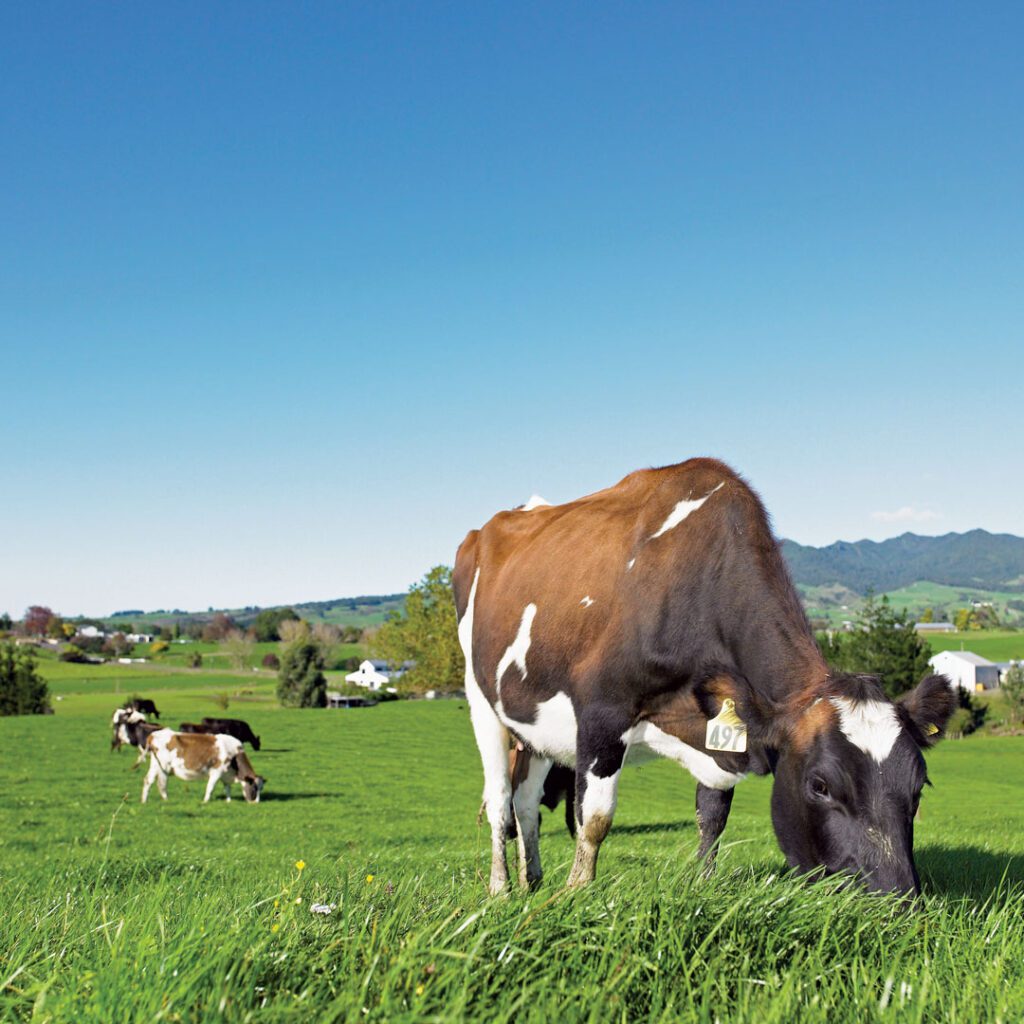Share this page
Climate change joint action plan on primary sector emissions (He Waka Eke Noa)
World-first collaboration between the primary sector, the New Zealand Government, and Iwi/ Māori (New Zealand’s indigenous people), to manage and reduce New Zealand’s greenhouse gas emissions from agriculture.


Alignment with SDGs
AUTHOR
Bruce Thorrold DairyNZ • New Zealand
Abstract
In New Zealand, agriculture accounts for 49 percent of total greenhouse gas emissions, with dairy almost half of that. As a food exporting nation, agriculture (and dairy) make up a significant portion of New Zealand’s total emissions. As such, the New Zealand dairy sector has been actively involved for many years in assessing agricultural greenhouse gas emissions from a farm-systems perspective.
In October 2019, the New Zealand Government adopted He Waka Eke Noa (Our future in our hands), a joint action plan to reduce primary sector emissions, which was proposed by agri-food and fibre groups (who collectively represent all farmers and grower interests within New Zealand) and an indigenous Māori landowners organisation.
Our promise
The Joint Action Plan on Primary Sector Emissions is leading the way with an innovative partnership that will equip farmers and growers with the knowledge, tools and support they need to manage and reduce emissions, and to adapt to a changing climate.
Moving the wheel
The Joint Action Plan was developed on the basis that a simple approach of charging farmers for greenhouse gas emissions, based on how much milk they produce, would not be a fair system nor drive the behaviour change needed to reduce emissions. Greenhouse gas emissions needed to be measured at the individual farm level, recognising that there are both emissions intensity and absolute emissions factors to be addressed. The Joint Action Plan seeks to solve the problem in a way that is good for the environment, the economy, and communities. It aims to equip farmers and growers with the knowledge, tools and support they need to manage and reduce emissions, and to adapt to a changing climate.
The Joint Action Plan sets out a work programme, by 2025, to:
- co-develop a mechanism to price agricultural greenhouse gas emissions at the farm level
- progressively implement farm level greenhouse gas reporting
- provide all farms with a plan to manage and reduce greenhouse gas emissions
- ensure all farms have access to region specific adaptation information
- develop programmes to support farm tree planting and measure on-farm sequestration
- support Māori agribusiness and integrate an approach that recognises the principles of kaitiakitanga (guardianship) and tikanga (Māori practices and behaviours)
- support the research, development and commercialisation of tools and technologies.
New Zealand has recently set a ‘split-gas’ 2050 greenhouse gas emissions target required to align New Zealand’s domestic targets with the goals of the Paris Agreement. This target recognises that, compared to carbon dioxide and nitrous oxide, agricultural methane is a short-lived gas that does not need to reduce to net-zero to stabilise the sector’s impact on global warming. The Joint Action Plan on Primary Sector Emissions will implement mechanisms that recognise this split gas approach.
The following milestones are included in the Joint Action Plan.
- All farmers will have farm plans by 2025 to show how they will measure and manage their on-farm agricultural greenhouse gases.
- All farmers will have a system for farm level accounting and reporting of their emissions by 2025.
This target recognises that, compared to carbon dioxide and nitrous oxide, agricultural methane is a short-lived gas that does not need to reduce to net-zero to stabilise the sector’s impact on global warming.
Bruce Thorrold Tweet
History of success
Through investment in research, development and commercialisation there will be greater availability and use of tools and technologies to help farmers reduce emissions which will also grow climate change mitigation knowledge and practice amongst farmers, growers, and rural professionals, in extension and engagement programmes.
The Government will check progress in 2022 to ensure enough progress is being made on commitments.
A valuable initiative
Achieving the commitments of the Joint Action Plan will drive long-term, sustainable change for New Zealand and deliver its climate goals while continuing to be a leader in sustainable food production.
Farmers and growers will be empowered to make change as the alternative pricing mechanism for livestock and fertiliser emissions will be designed in a practical and cost-effective manner. Furthermore, farmers and growers will be supported to future-proof their farm to the impacts of adverse weather.
This Joint Action Plan brings together agricultural experts across New Zealand and builds on work already done by each sector partner including the development of tools, resources, and research.
The Joint Action Plan will help the primary sector pool its resources, including research, to achieve the commitments.
Further information
can be found here on Dairy New Zealand and New Zealand Ministry of Environment.






